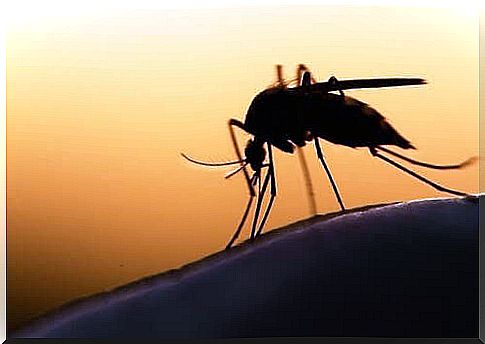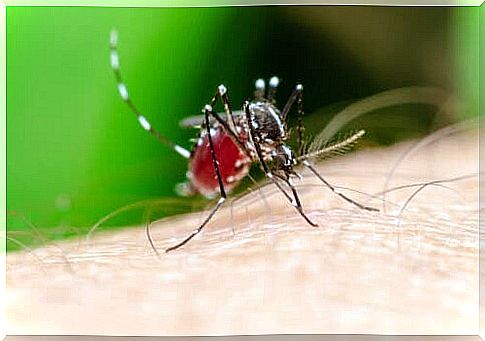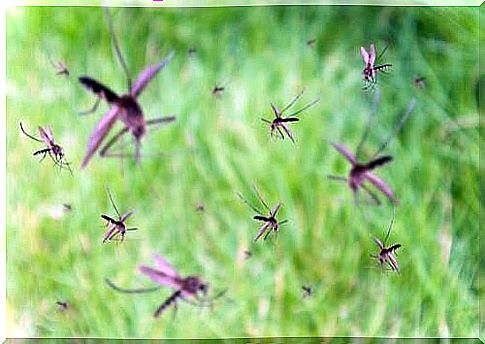7 Curiosities About Mosquitoes You Didn’t Know

The buzzing, burning, and itching are an annoying mix of side effects caused by contact with mosquitoes. These small, long-legged flying insects often disturb our sleep during hot summer nights. In the worst case, they can also transmit serious diseases. In this article, we tell you some curiosities about mosquitoes that you didn’t know.
Curiosities about mosquitoes
The Culicidae are a family of Diptera – that is, they have two wings – and nematocari – who have long threadlike antennae and multi-segmented – which are known colloquially as mosquitoes. They have an elongated body and their size generally does not exceed 15 millimeters. They have a life expectancy of between 10 and 15 days.
Currently, there are about 3,500 recognized species, which inhabit a large part of the planet. Here are some curiosities about mosquitoes that are worth knowing.
1. It is the insects that cause the most deaths
Although most culicides are harmless to humans, some species of these insects cause around 750,000 deaths a year worldwide. And they are carriers of many dangerous diseases. Between them:
- Dengue.
- Zika.
- Yellow fever.
- Chikungunya.
- Malaria.
- West Nile fever.

The viruses and parasites that produce these diseases are transmitted through the infected saliva of the mosquito and affect children and the elderly with greater force.
We tell you some curiosities about mosquitoes, these annoying insects that buzz, bite and can transmit a large number of diseases, many of which are quite serious.
2. Only females bite
Mosquitoes feed on plant nectar, fruit juice and other liquids they get from vegetables. Only the females bite people and other animals to suck blood which will ensure the development of the eggs, which will then be deposited in the stagnant waters.
3. They use six needles to suck blood
It is often thought that to bite the mosquito, it simply inserts the elongated appendix on its head, called the proboscis, but this is not the case. In fact, inside that tube there are six needles that perform different and complementary functions. That means:
- Two of them have some kind of “teeth” which they use to pierce the skin.
- Two others are used as tweezers to keep the skin apart.
- One of the needles is in charge of detecting blood vessels.
- The sixth needle is the one that sucks the blood.
4. It is the saliva of the mosquito that causes itching
When it bites, the female mosquito leaves traces of its saliva on the skin. This substance performs anticoagulant functions and allows blood to be sucked more easily.

Most people are allergic to the saliva of this insect. It is then that the immune system provokes a response by generating redness, inflammation and itching.
5. The hum is caused by the flapping of the wings
That annoying sound so characteristic of mosquitoes, and which we often hear when we are about to fall asleep, is generated by the constant movement of their wings. The larger the specimen, the louder the buzz will be.
6. They detect the carbon dioxide we exhale
If you wonder why mosquitoes show this strange predilection for buzzing around the head, the answer is that they detect the carbon dioxide we exhale. But they are also attracted to sweat and other odors, even those of some perfumes.
7. Mosquitoes contribute to the ecological balance
Among the curiosities about mosquitoes, it is worth clarifying that, in addition to the buzzing, itching and diseases they transmit, like all living beings they play an important role in maintaining natural balance. In fact, they stand out as skilled pollinators and are an important food source for birds, bats, reptiles, fish and amphibians.









